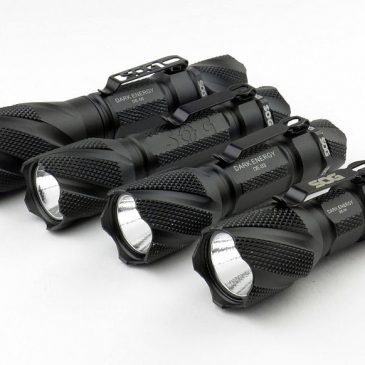As well as the hybrid SOG Bladelights I reviewed recently, SOG also have a line of dedicated lights named ‘Dark Energy’. I have four of them on test, the DE-01, DE-02, DE-03 and DE-06 to compare the different power options and their performance.
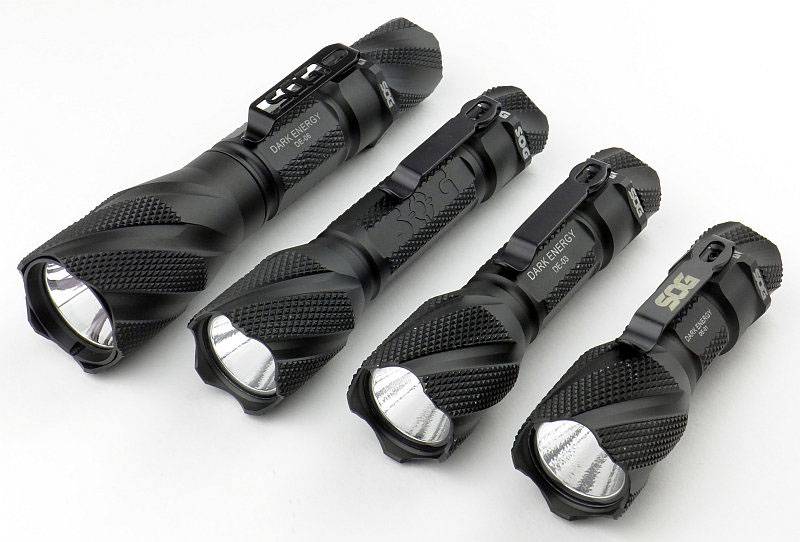
In case you notice that the DE-03 (AA powered) looks a little worn, that particular light has been a show demo light and was supplied in well used condition alongside the other new, boxed, models.
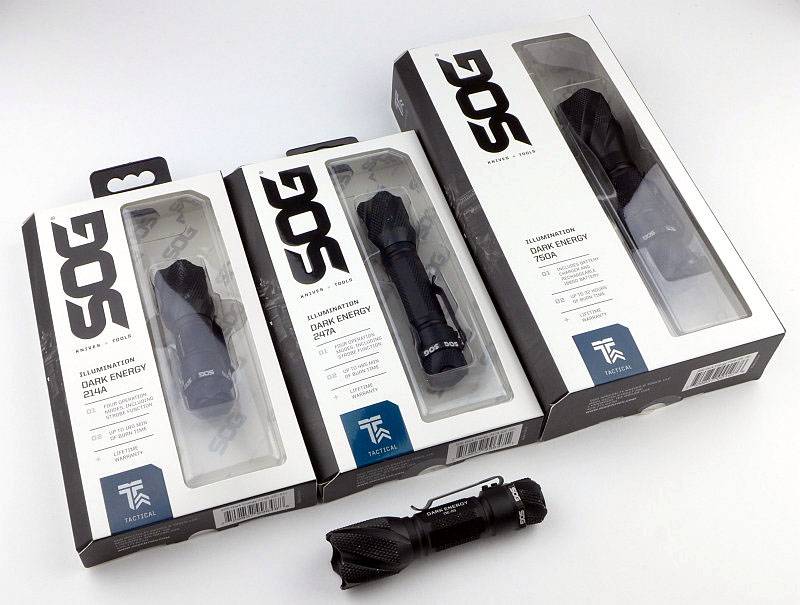
As each light is built around the power source, the sizes vary accordingly. From left to right, the DE-06 uses 1×18650, DE-02 uses 2xCR123, DE-03 uses 1xAA and the DE-01 with a CR123.
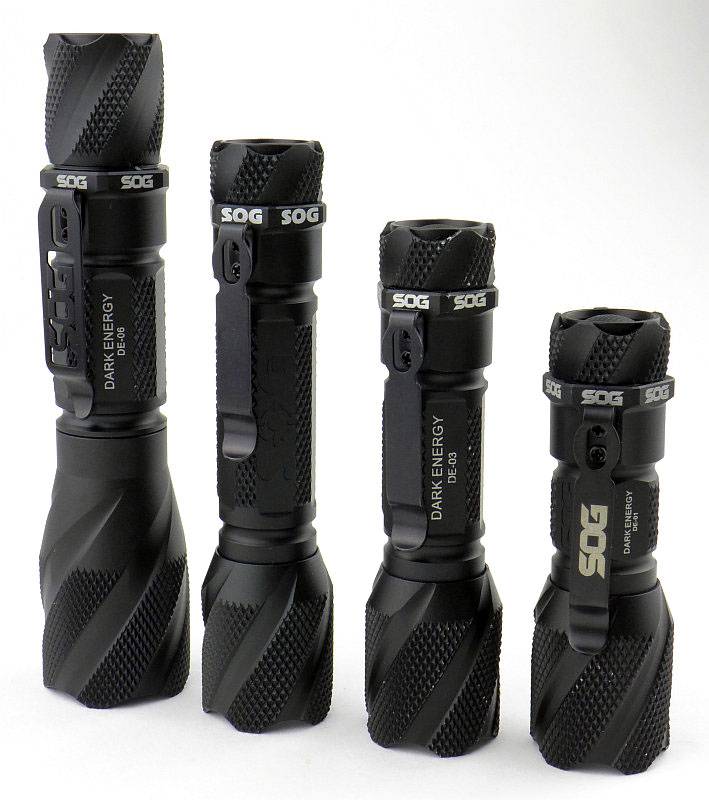
Taking a more detailed look at the DE-06:
Of the four models on test, three have very similar details (DE-01, DE-02 and DE-03) but the DE-06 is different so needs its own section.
SOG’s presentation is excellent with a distinctive bevelled edge box.
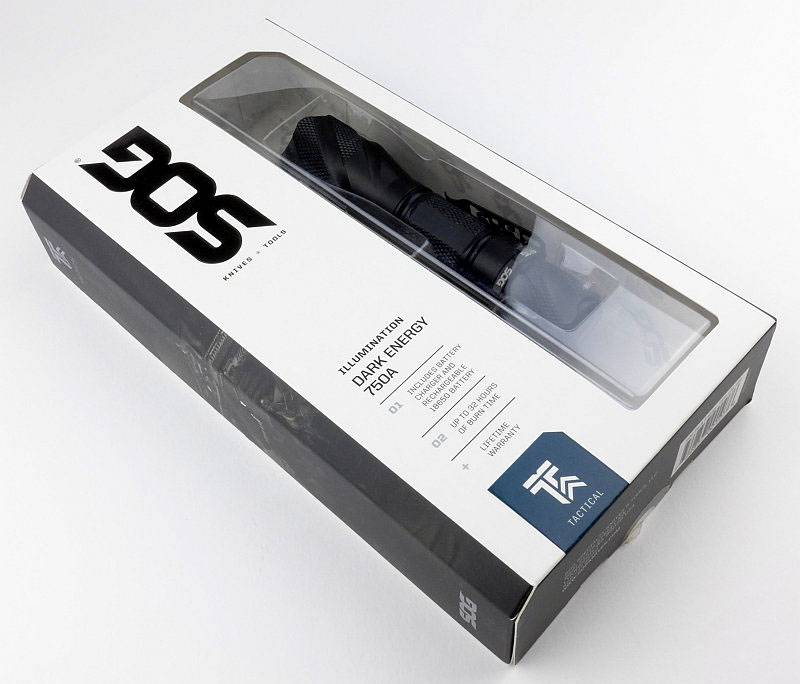
Even with the DE-06, which is the only rechargeable model, the contents are minimal. As well as the DE-06 there is a Nextorch branded 2600mAh 18650 cell and a single bay charger with mains adapter.
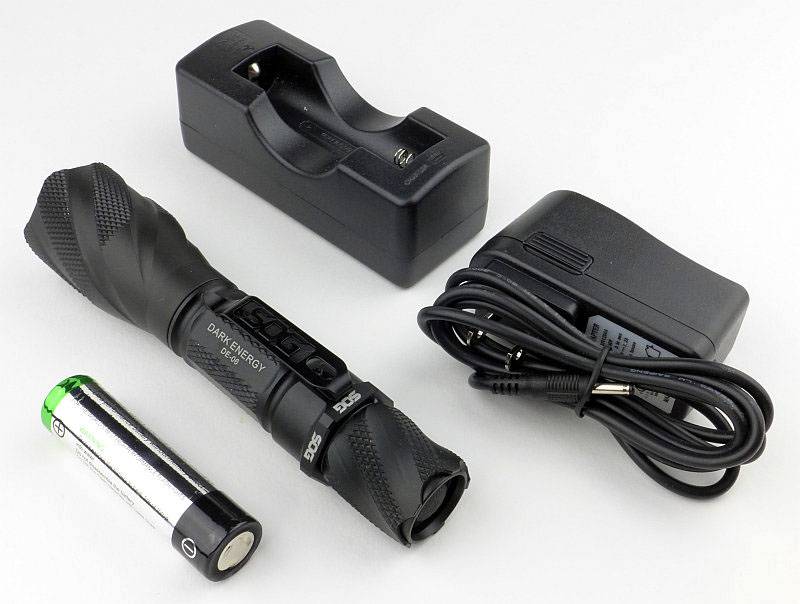
The basic single bay charger with cell fitted.
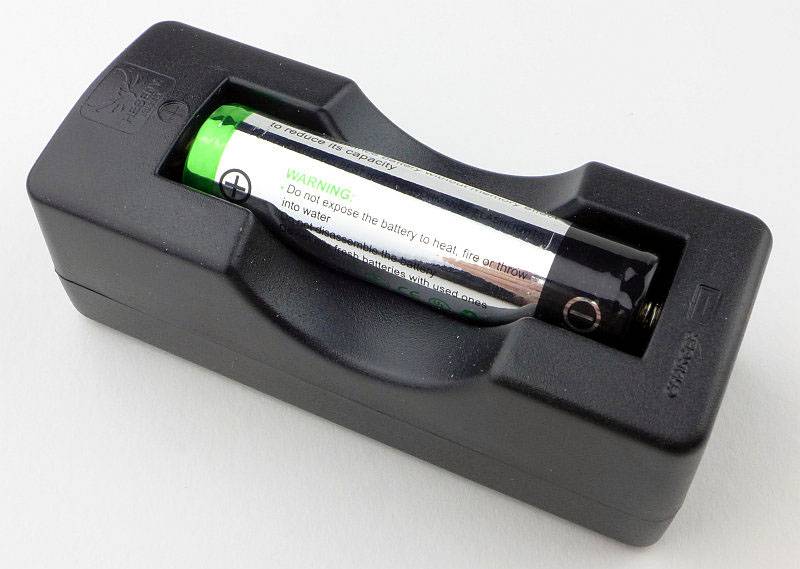
Immediately you can see the strong SOG styling of the Dark Energy series with more knurling than most lights, including the head.
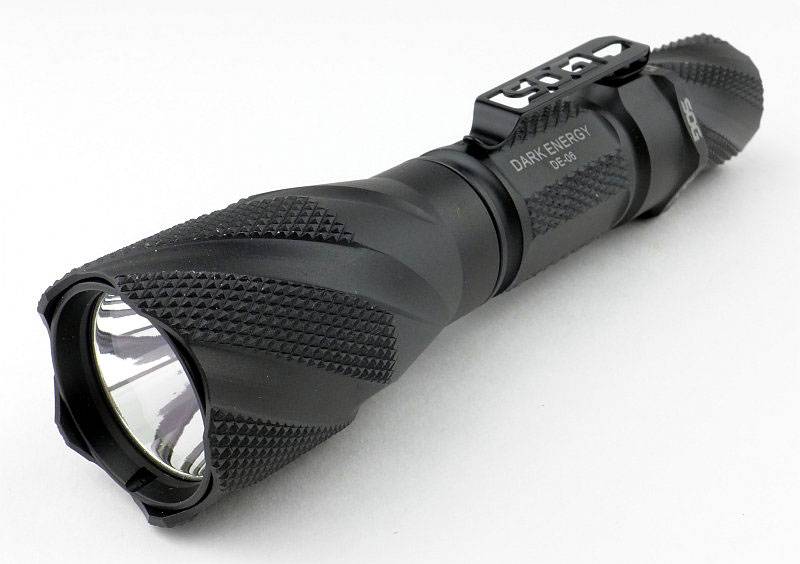
SOG offer engraving on just about all their products, so you will notice some customisation on these samples.
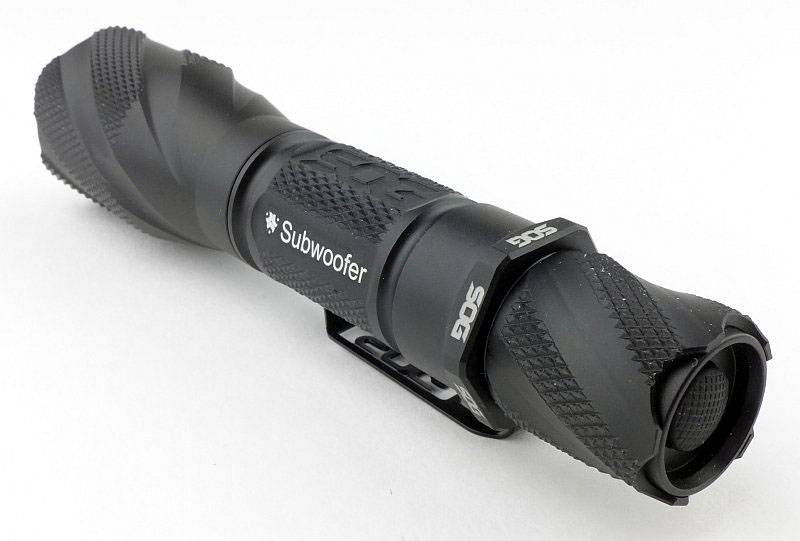
The wide clip is attachedto the side of the light with two screws.
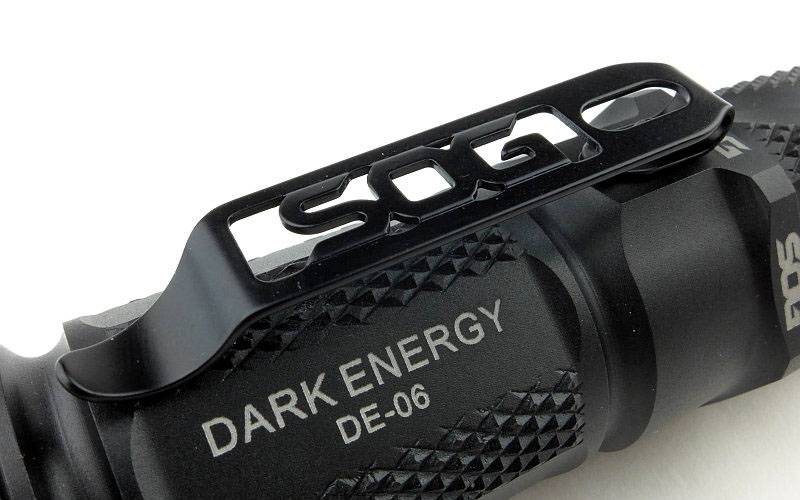
You can tailstand these lights and the switch boot is recessed. With gloves it can be more difficult to operate the switch.
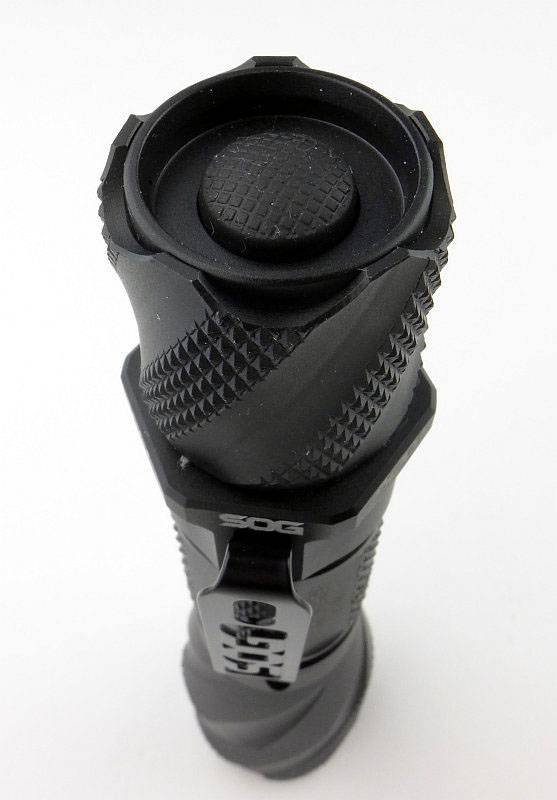
A broad gold-plated sprung-plunger acts as the negative terminal and the battery tube contact is gold-plated as well.
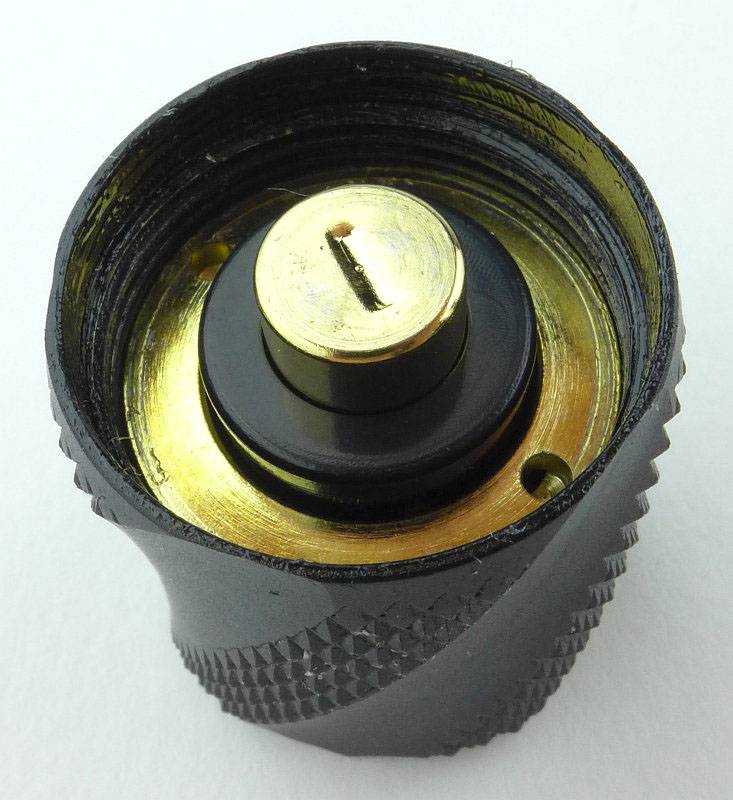
In the DE-06 only, the threads are fully anodised meaning you can lock-out the light. The threads are well lubricated and nearly square.
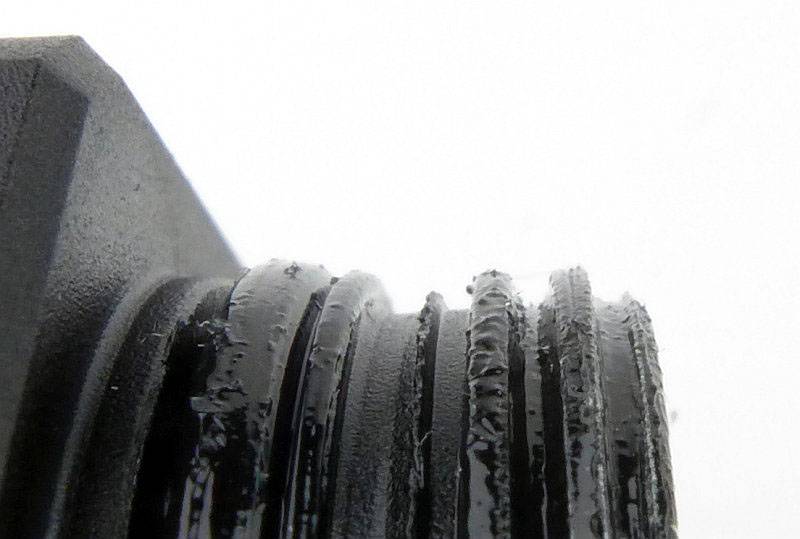
Looking inside the battery tube, the positive contact is a spring terminal.
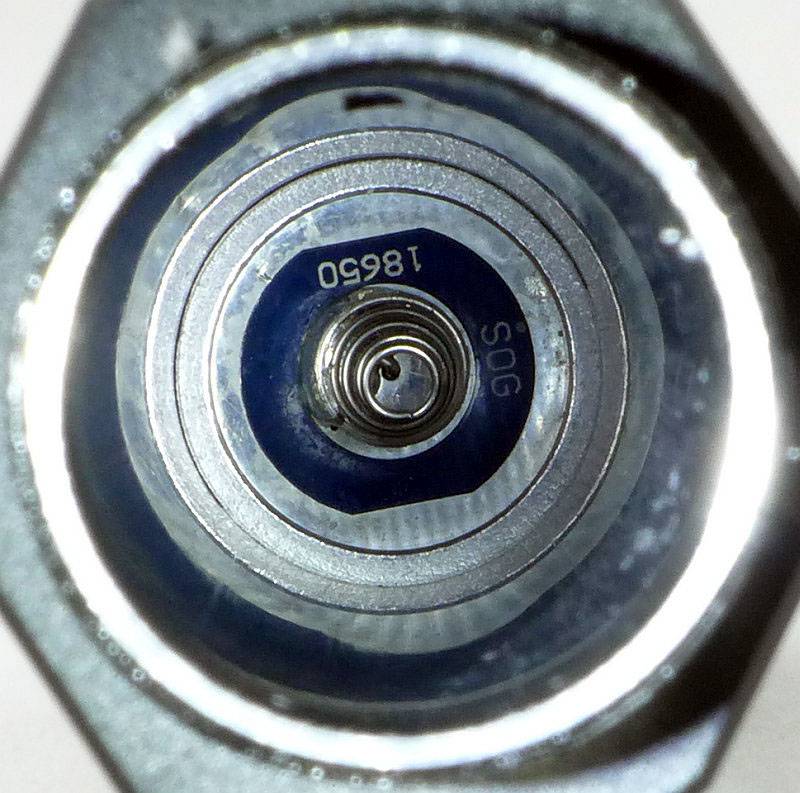
Though not specified on the packaging, the LED is an XM-L2.
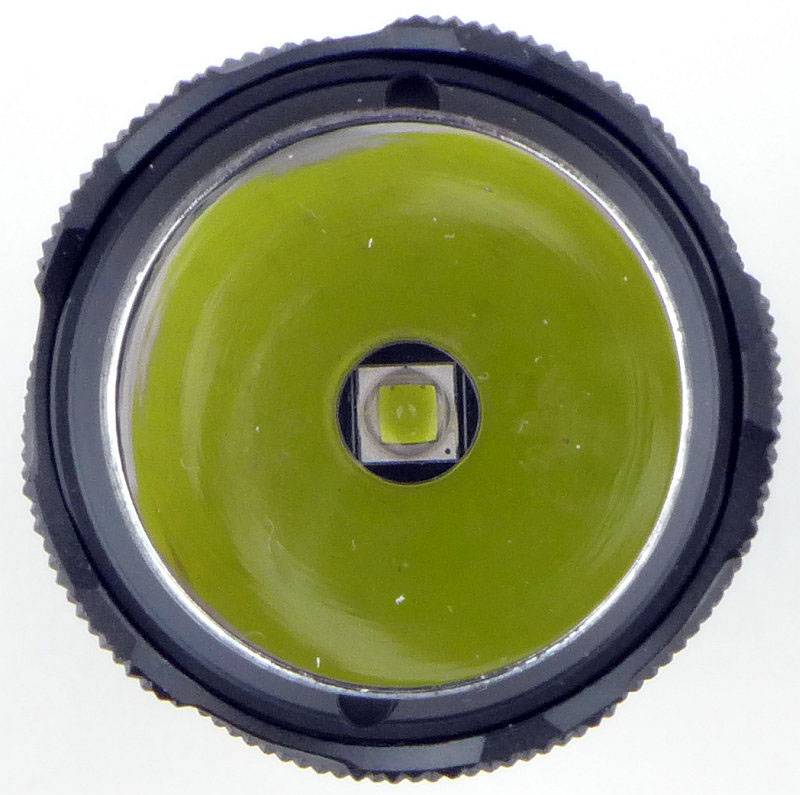
Unlike the other models, the DE-o6 uses a smooth reflector.
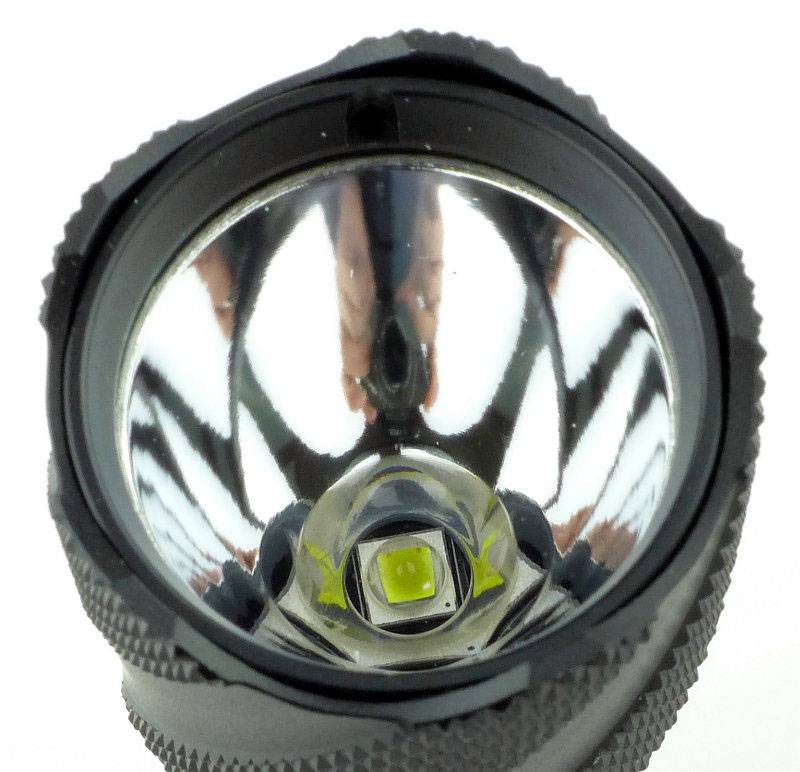
As well as the laser engravings on the DE-06, it also has ‘SOG’ machined into the side prior to anodising.
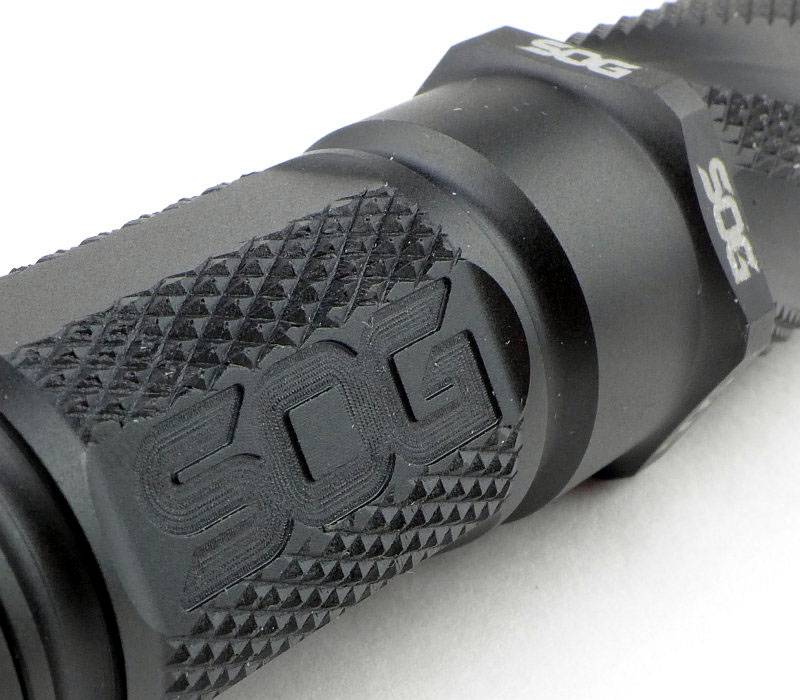
Just for scale, this is the DE-06 next to its 18650 cell.
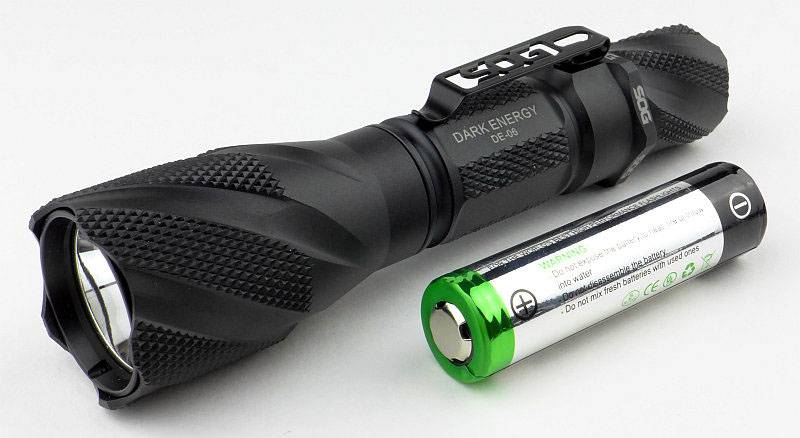
Taking a more detailed look at the DE-01:
This one has been chosen to represent several models as the details of the DE-01, DE-02 and DE-03 are all very similar (apart from battery tube length).
SOG’s packaging is the same for the entire series and other SOG products as well.
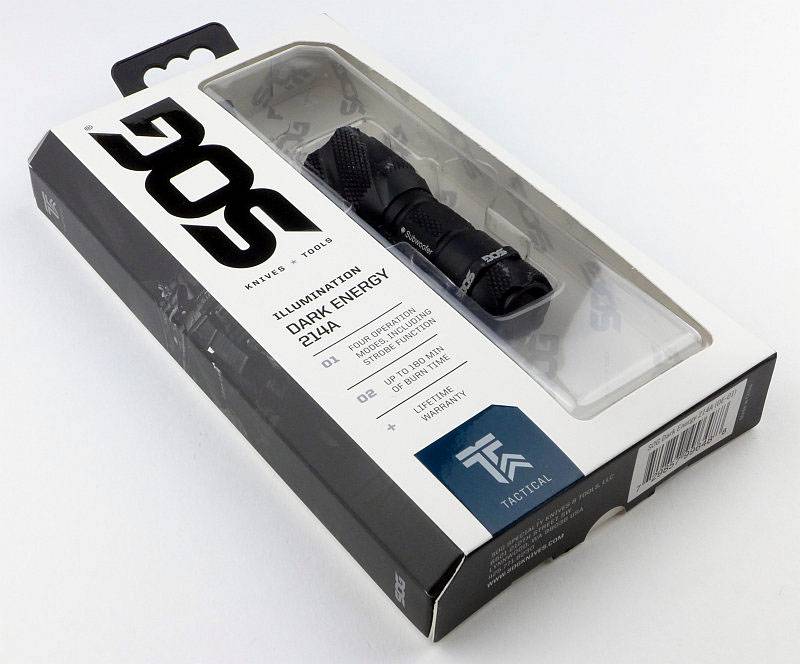
Even simpler than the DE-06, the DE-o1 simply comes with a CR123 primary cell with SOG branding.
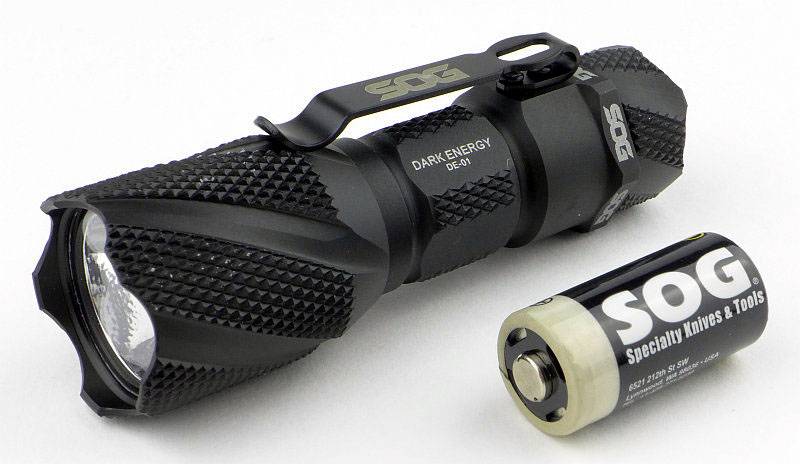
All of the Dark Energy lights have extensive aggressive knurling and here you can see traces of the packaging that the knurling on the head has scratched off. There are no flaws in the anodising, what you see is debris from the packaging.
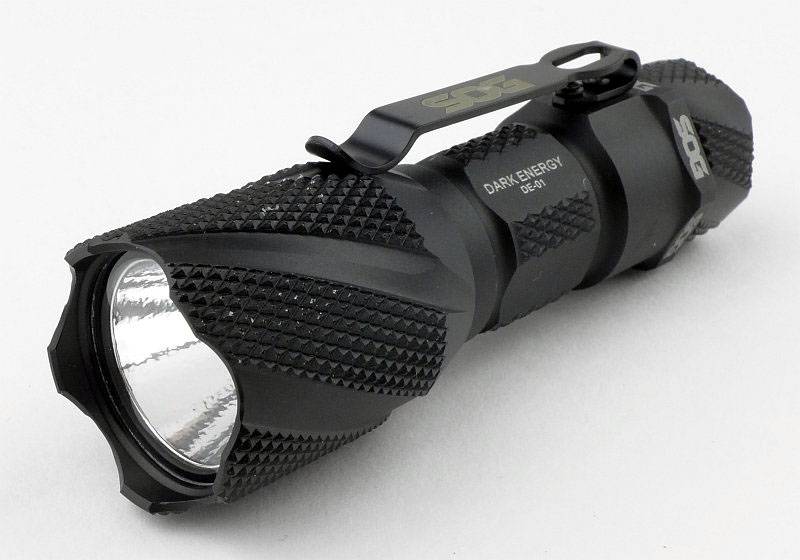
A closer view of this knurling.
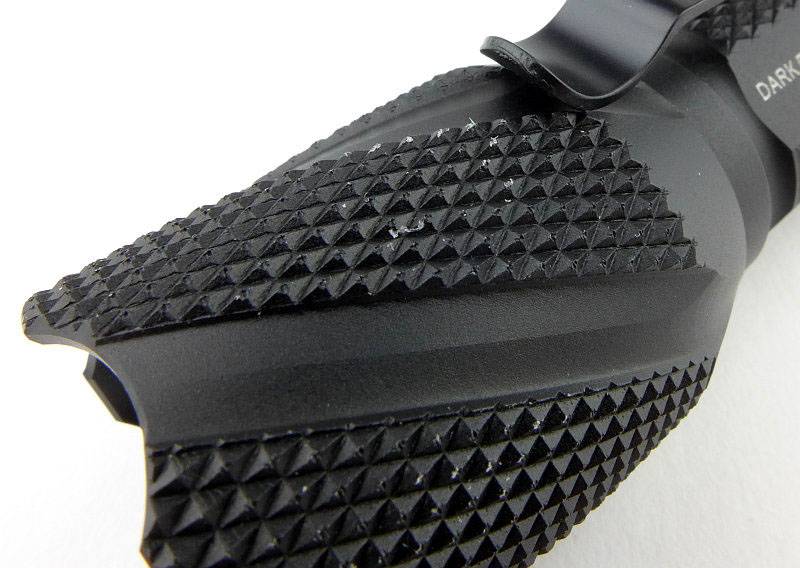
The DE-01 uses a slimmer pocket clip which is fixed to the side with two screws.
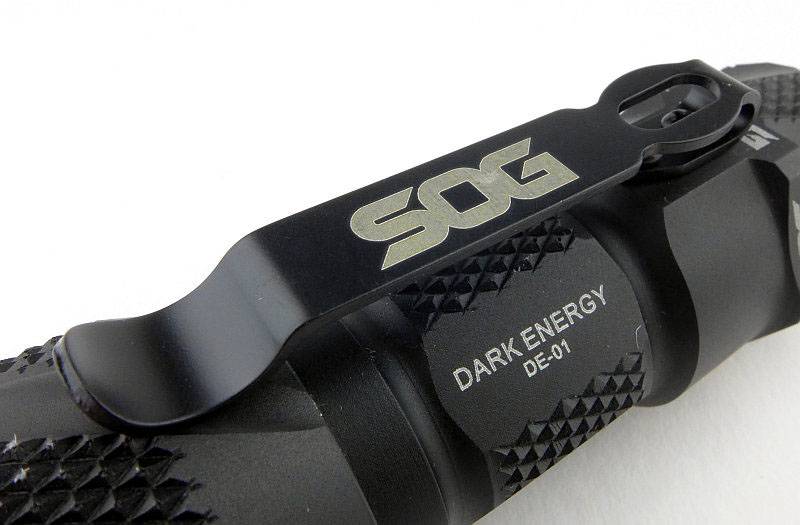
Even on the smallest of the lights, the custom engraving has been fitted on.
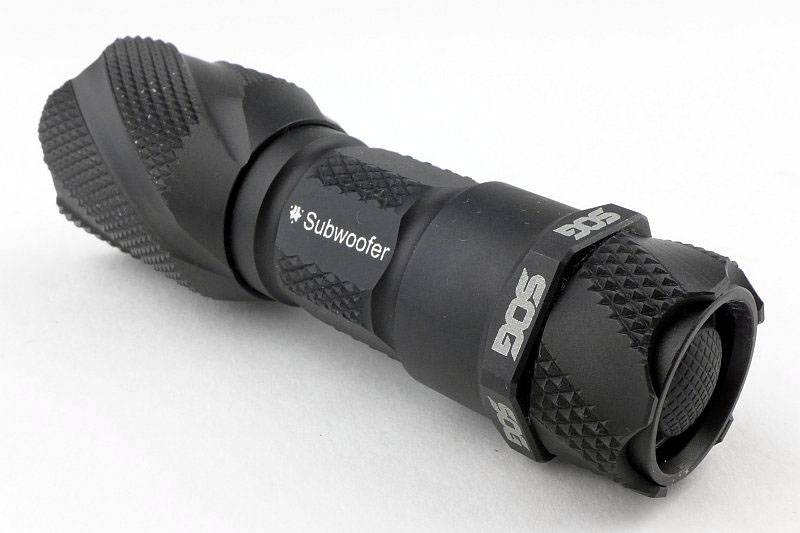
Looking closer, the engraving is still clear enough despite being reduced to a very compact size.
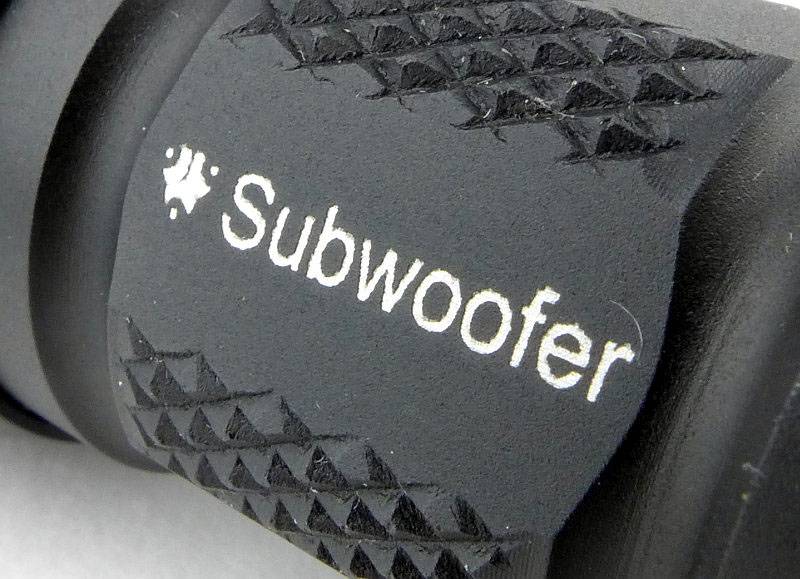
As with the DE-06 the switch is slightly recessed and tail standing is possible.
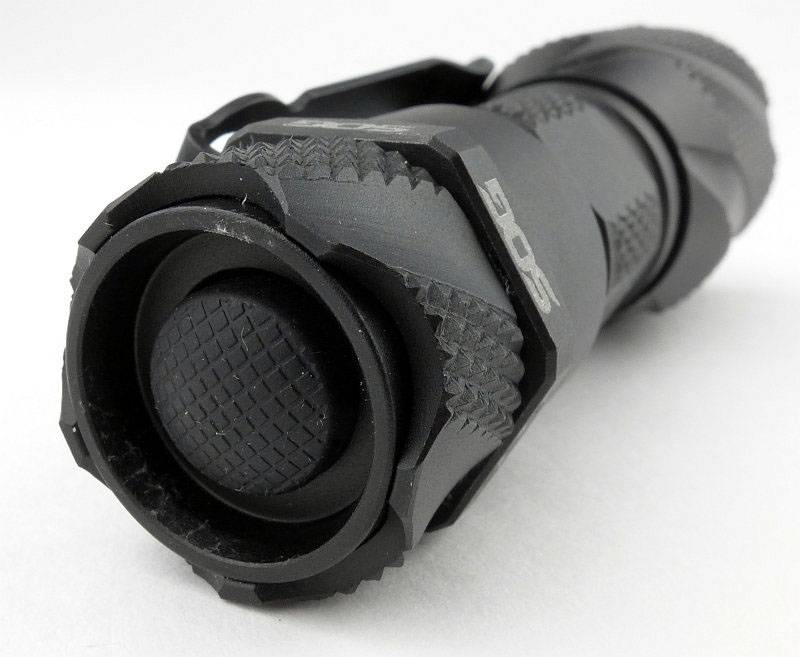
Where the DE-01, DE-02 and DE-03 really differ from the DE-06 is with the tailcap. A very different configuration with an exposed spring terminal and bare threads.
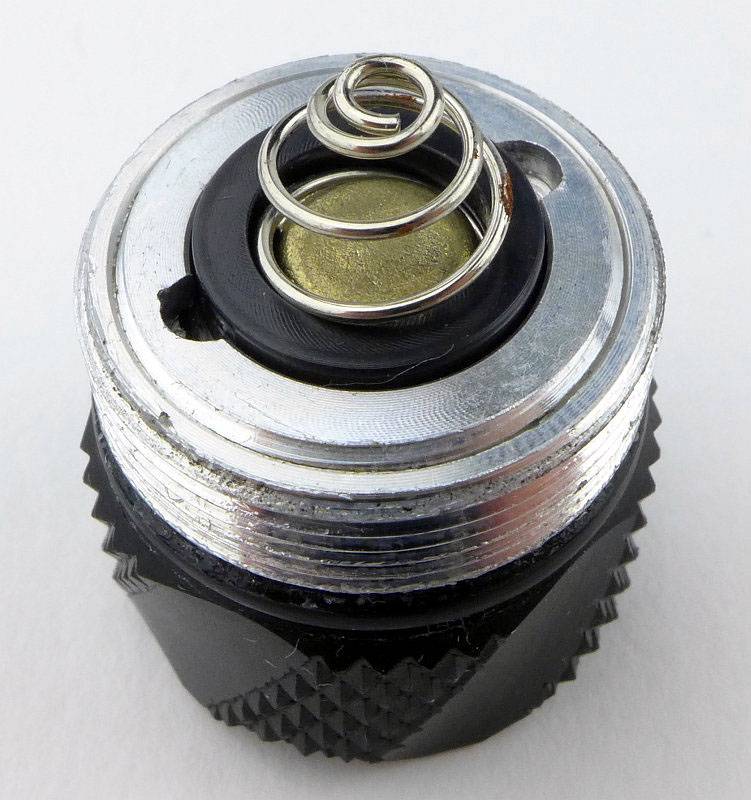
Bare aluminium standard threads are used.
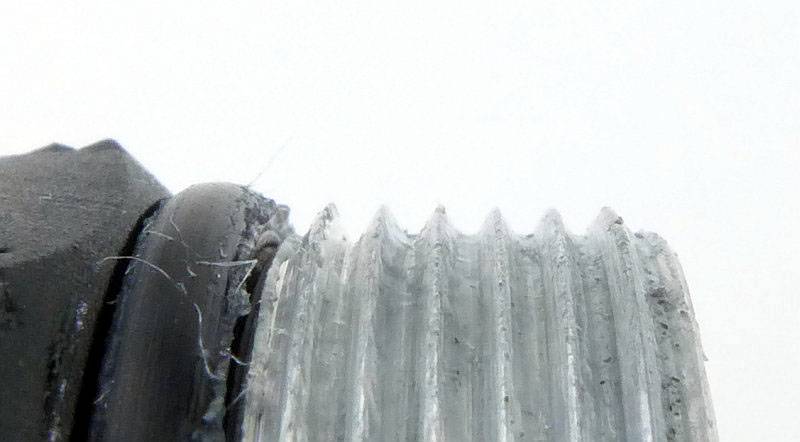
Inside the battery tube, the positive terminal is not sprung.
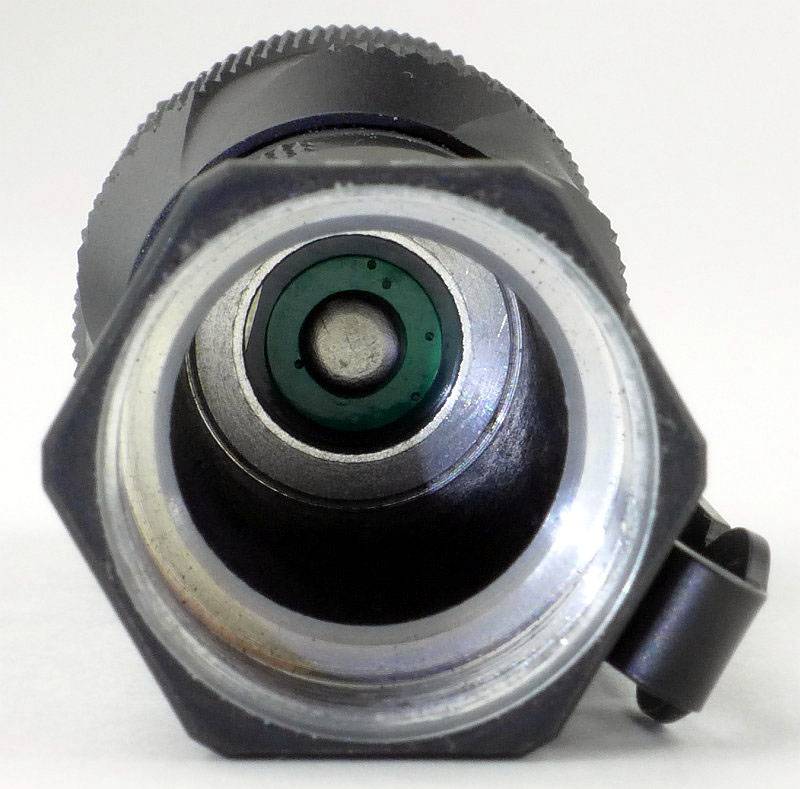
Textured reflectors are used for the smaller models. This is more suited to EDC tasks.
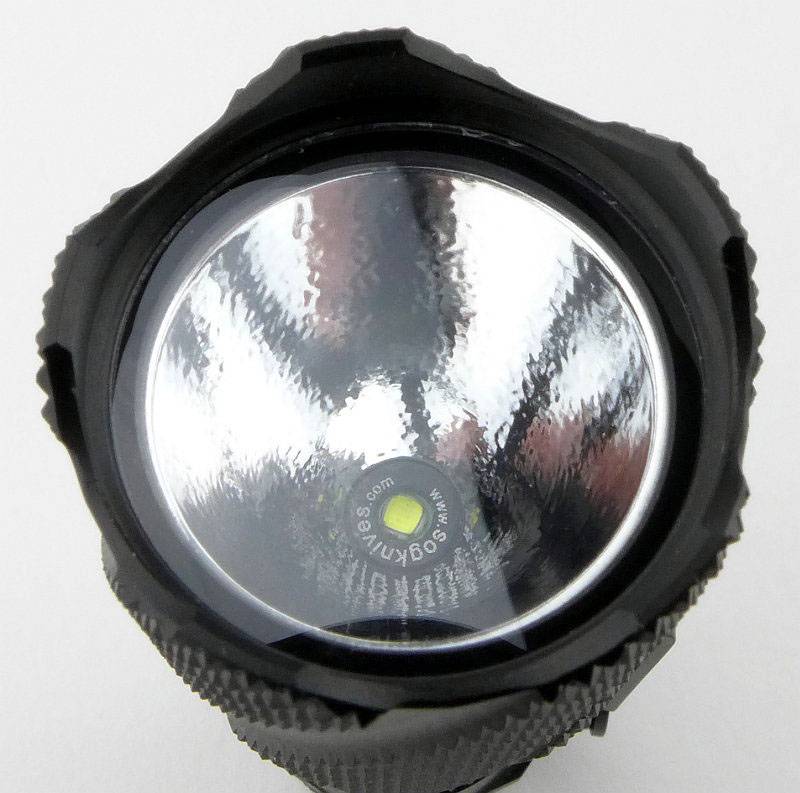
There is a SOG identifier around the XP-G R5 LED.
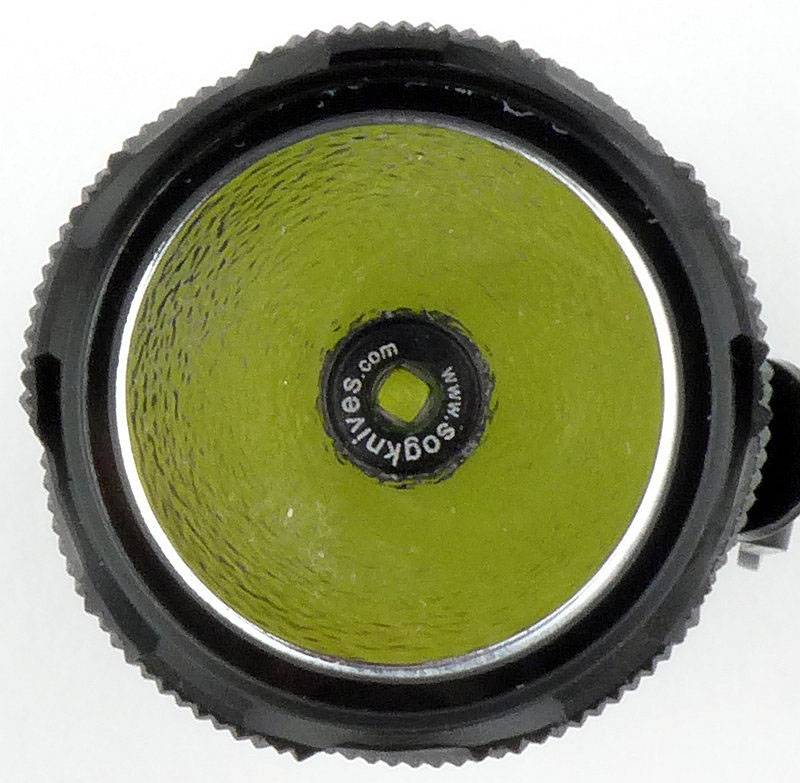
The beam
Please be careful not to judge tint based on images you see on a computer screen. Unless properly calibrated, the screen itself will change the perceived tint.
The indoor beamshot is intended to give an idea of the beam shape/quality rather than tint. All beamshots are taken using daylight white balance. The woodwork (stairs and skirting) are painted Farrow & Ball “Off-White”, and the walls are a light sandy colour called ‘String’ again by Farrow & Ball. I don’t actually have a ‘white wall’ in the house to use for this, and the wife won’t have one!
All exposure have been kept the same for this series of indoor and outdoor beamshots to allow a direct comparison of the different outputs to be made.
Despite the textured reflector of the smaller lights, there is still a bright hotspot in the DE-01’s beam. The spill is relatively dim and the outer spill shows the shaping of the bezel.
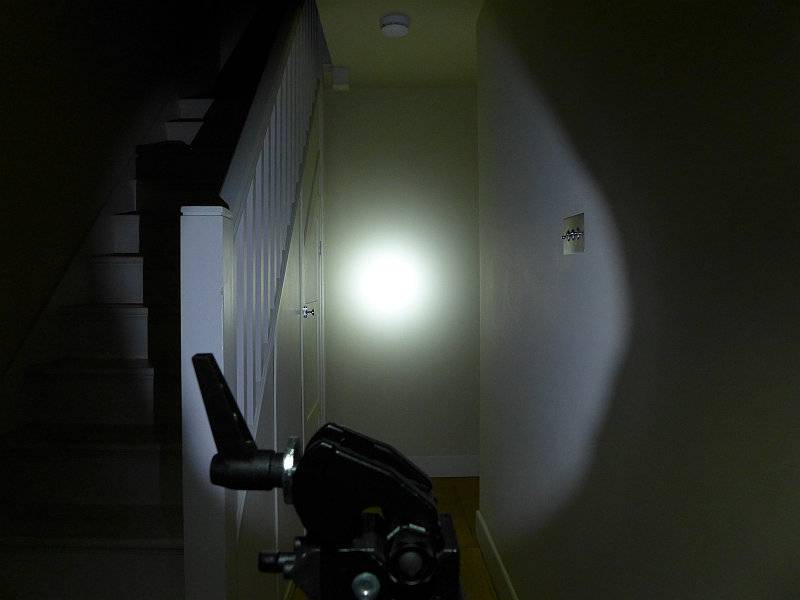
Moving to the DE-02 the main difference here is that the output is higher; the beam characteristics are the same.
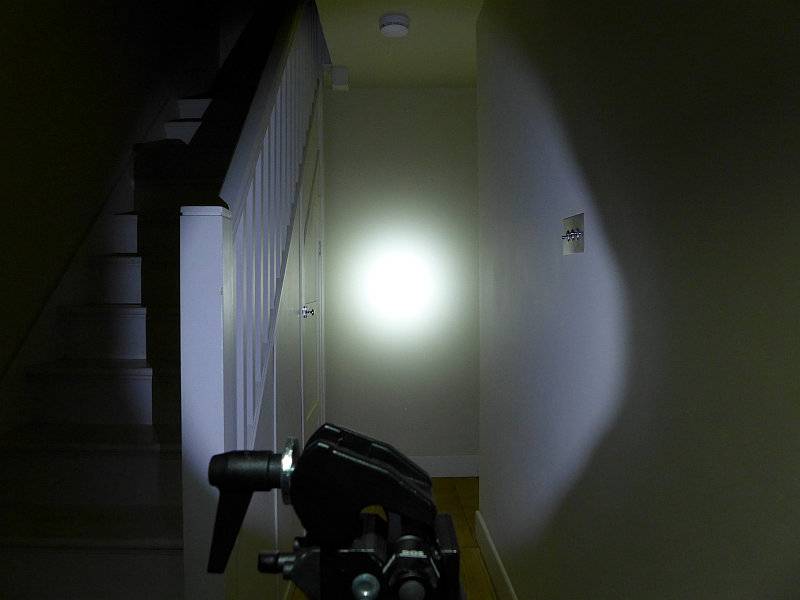
Again with the DE-03 (the dimmest of all being AA powered) the beam characteristics are the same as the previous two.
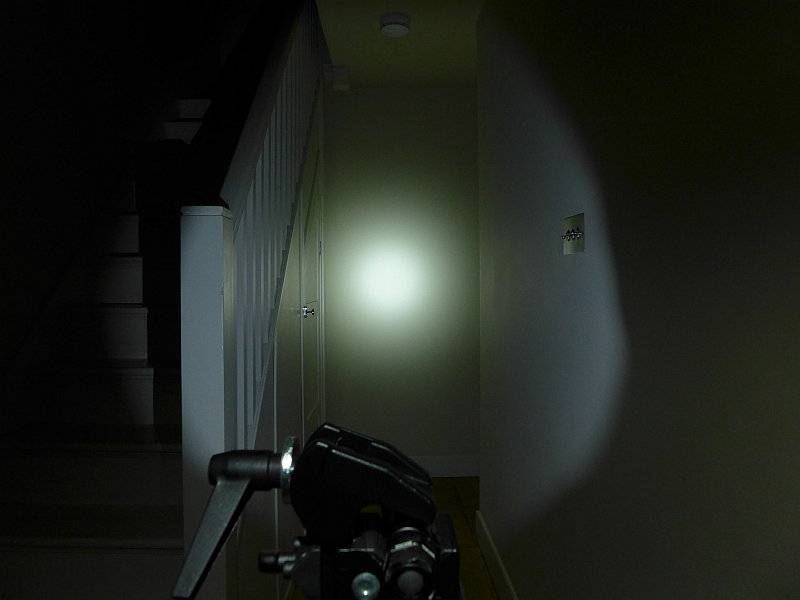
With its smooth reflector and larger emitter, the DE-06 has a better beam overall with wide hotspot and much more usable spill.
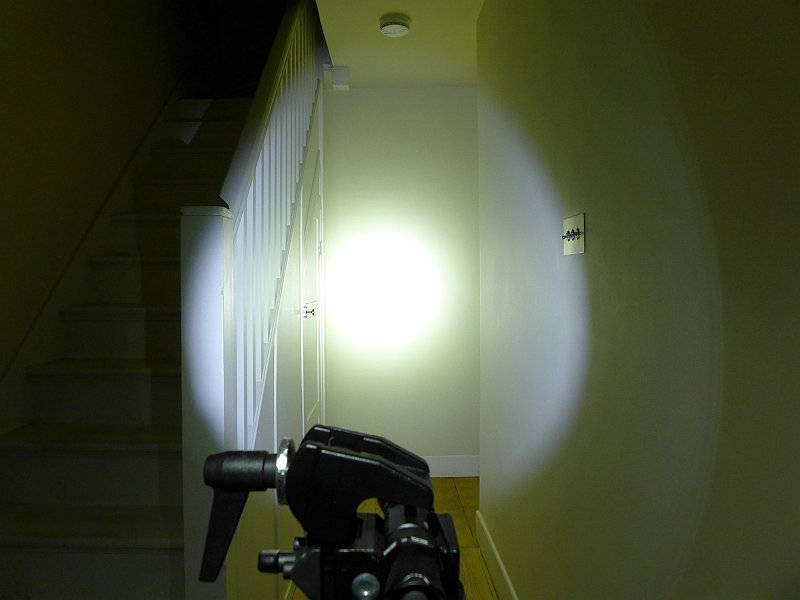
Moving outdoors the DE-01’s beam shows the benefit of the small hotspot as it gives the beam a reasonable range for its output.
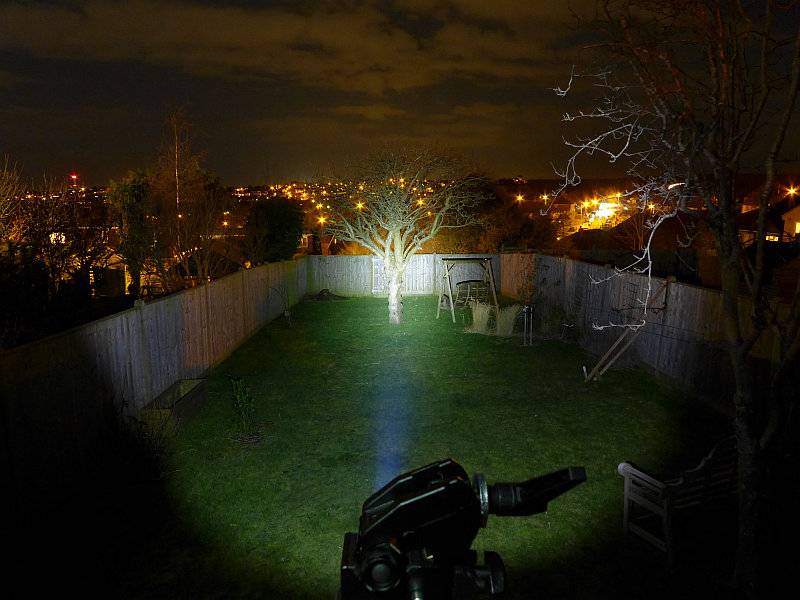
As the DE-02 has 2x CR123 it is simply a brighter version of the DE-01.
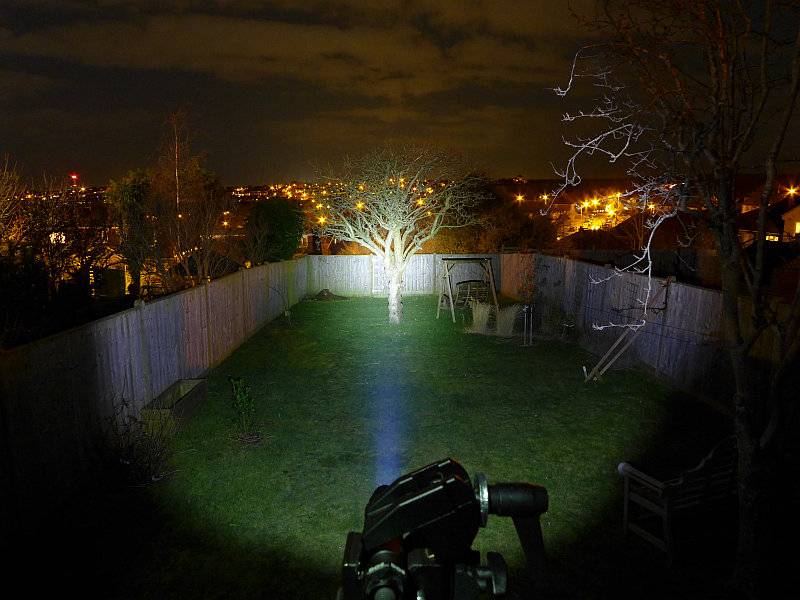
At the extended range and only having a single AA for power, the DE-03 starts to run out of steam.
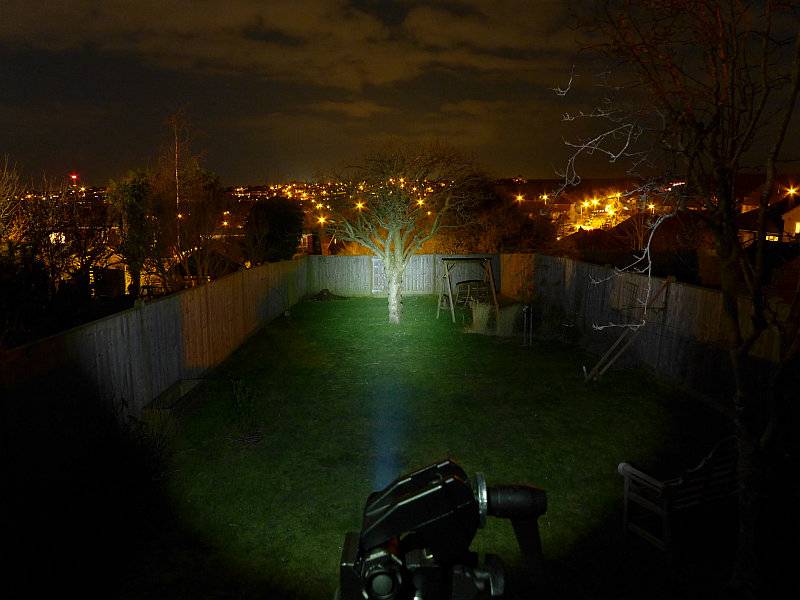
The combination of 18560 (li-ion) power, a larger smooth reflector and a powerful XM-L2 LED gives the DE-06 much more punch that the smaller lights.
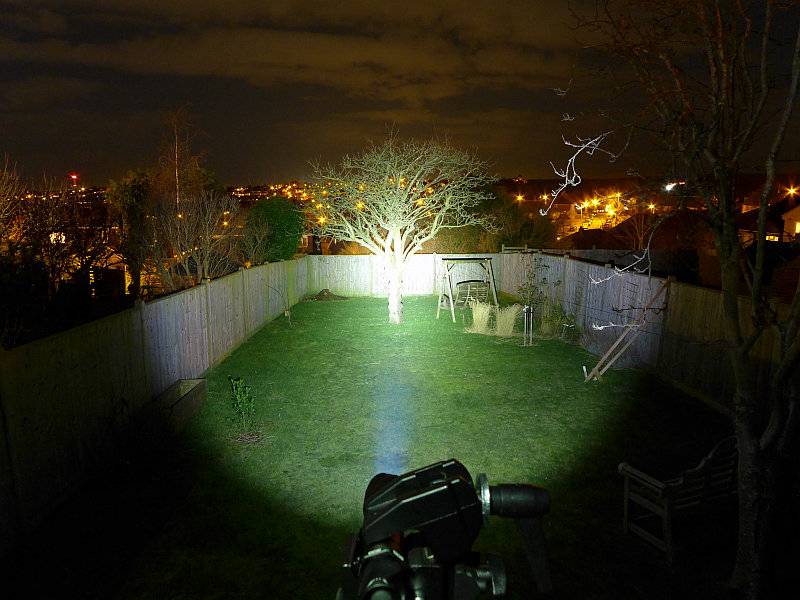
Modes and User Interface:
All the Dark Energy lights use a very intuitive dual function tail-cap switch. It operates like both a forward-clicky and reverse-clicky at the same time.
From OFF, using the momentary operation, you get High mode every time and you can tap the switch as many times and as quickly as you like, you only get High.
Once clicked ON, now if you tap the switch (half press) you cycle through the available modes.
Once you switch OFF, you will then get High on the first press every time.
For the DE-01, DE-02 and DE-03, the modes are High -> Low -> Strobe -> High etc…
For the DE-06 the modes are High -> Medium -> Low -> Strobe -> High etc…
Simple, intuitive and predictable.
Batteries and output:
The DE-01 runs on 1xCR123.
The DE-02 runs on 2xCR123.
The DE-03 runs on 1xAA.
The DE-06 runs on 1×18650 (also 2xCR123 and 1×17670).
To measure actual output, I built an integrating sphere. See here for more detail. The sensor registers visible light only (so Infra-Red and Ultra-Violet will not be measured).
Please note, all quoted lumen figures are from a DIY integrating sphere, and according to ANSI standards. Although every effort is made to give as accurate a result as possible, they should be taken as an estimate only. The results can be used to compare outputs in this review and others I have published.
| ___________________________________________ | ________________________________ | ________________________________ |
| Model/Mode using specified cell | I.S. measured ANSI output Lumens | PWM frequency or Strobe frequency (Hz) |
| ___________________________________________ | ________________________________ | ________________________________ |
| DE-01/High – CR123 | 199 | 0 |
| DE-01/Low – CR123 | 79 | 760 |
| DE-01/Strobe – CR123 | 55 | 9.8 |
| DE-02/High – 2xCR123 | 252 | 0 |
| DE-02/Low – 2xCR123 | 91 | 760 |
| DE-02/Strobe – 2xCR123 | 70 | 10.2 |
| DE-03/High – AA Eneloop | 115 | 0 |
| DE-03/Low – AA Eneloop | 43 | 740 |
| DE-03/Strobe – AA Eneloop | 33 | 9.8 |
| DE-06/High – Supplied 2600mAh 18650 | 716 | 0 |
| DE-06/Medium – Supplied 2600mAh 18650 | 255 | 2940 |
| DE-06/Low – Supplied 2600mAh 18650 | 21 | 1420 |
| DE-06/Strobe – Supplied 2600mAh 18650 | 377 | 8.3 |
* Beacon and Strobe output measurements are only estimates as the brief flashes make it difficult to capture the actual output value.
DE-01 peak Beam intensity measured 5400 lx @1m giving a beam range of 147m.
DE-02 peak Beam intensity measured 7100 lx @1m giving a beam range of 169m.
DE-03 peak Beam intensity measured 2700 lx @1m giving a beam range of 104m.
DE-06 peak Beam intensity measured 14500 lx @1m giving a beam range of 241m.
There is parasitic drain in all models:
In the DE-01, drain was 8uA (averaged as it varied from 3-12uA) giving 19.96 years to drain the cell.
In the DE-02, drain was 6.8uA giving 23.49 years to drain the cell.
In the DE-03, drain was 24uA (averaged as it varied from 4-44uA) giving 9.03 years to drain the cell.
In the DE-06, drain was 5uA giving 77.57 years to drain the cell.
Both CR123 powered lights show good regulation and the AA powered DE-03 has a reasonably consistent output. Though always much higher in output than the other lights, the DE-06 is not regulated (or not able to maintain regulation with the supplied cell).
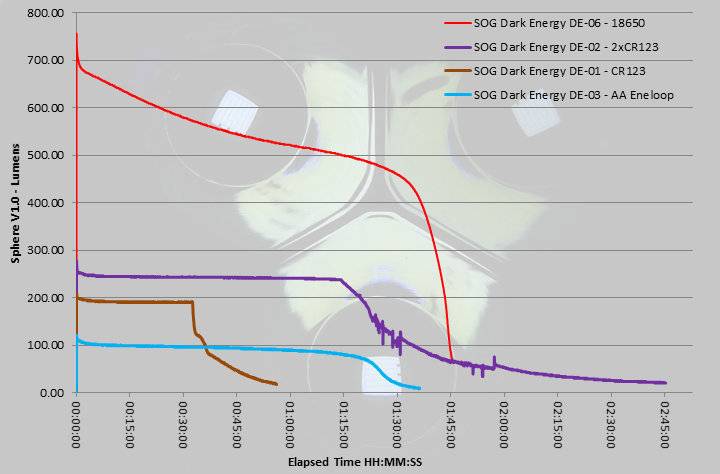
Troubleshooting
This section is included to mention any minor niggles I come across during testing, in case the information helps anyone else.
No serious issues were encountered during testing.
However, I did find the switch on the DE-06 failed to latch at times. With the recessed switch design I found I ended up pushing the switch sideways as well as in and when doing this occasionally had the issue. Pressing the switch straight in always worked correctly, so it was the sideways pressure that caused the occasional issue.
As per the description of this section, this information is provided in case anyone else finds a similar ‘issue’ that might be fixed in the same way.
The Dark Energy lights in use
My personal lighting requirements generally mean I want to start on low, but reliably starting on high is important for many users, and with the excellent dual function switch these Dark Energy lights allow you to know every time you pick them up you get maximum output on the first press every time.
With that usage in mind, I would have preferred a protruding switch to make it easy to hit the button gloved or not.
The extensive knurling is aggressive and abrasive but ensures a very firm grip whatever your hands or the light are covered in and wherever you grab it. Storage and carry need some consideration as it will wear through fabrics fairly fast.
Especially with this feature of the knurling, the lack of a holster is a disappointment as a properly matched holster would take away the problem of finding a suitable carry solution for these lights.
For each model the output levels are sensible and do not push the cells too hard. In these days of lumen chasing SOG have taken a good approach as you get a good balance of output and runtime.
With relatively limited outputs, the smaller Dark Energy lights use a more focused beam which extends their usable range. This choice does mean they are not so good for close range and indoor uses as you can get hotspot tunnel vision.
In the output measurements you will see that the lower levels use PWM. Fortunately this has been set at a reasonably high frequency. Despite my PWM hypersensitivity, I did not notice the DE-06 giving any PWM effects. For the DE-01, DE-02 and DE-03 the frequency is a bit lower and this did result in me noticing a few PWM effects, but it was not bad. (1000Hz is the critical point where above this I can’t visually detect PWM and below this I can – 300Hz and below becomes very noticeable)
In a crowded market, the outstanding features of this series of lights is the dual function switch and resulting user interface, and the distinctive all-over knurling with super secure grip that this gives you.
Review Summary
| _______________________________________________ | _______________________________________________ |
| Things I like | What doesn’t work so well for me |
| _______________________________________________ | _______________________________________________ |
| Excellent Dual-Function switch. | No Holster provided. |
| Superb grip from all-over knurling. | Knurling is very abrasive. |
| Reliably switches onto Maximum output. | Recessed switch sometime difficult to fully press. |
| Choice of power sources and sizes. | Occasional PWM effects on low mode (except DE-06). |
| Quality personalisation engraving available. |
Discussing the Review:
Please feel free to add comments to the review, but the ideal place to freely discuss these reviews is on a forum. If you started reading the shorter forum version of the review, but followed the link this full exclusive review, please return to that forum to discuss the review there.
If you read the review entirely on Tactical Reviews, please consider one of the following to join in any discussion.
CandlePowerForums – Flashlight Reviews Section (Largest and Friendliest Flashlight Community Forum)
EdgeMatters – Sponsored Reviews (UK based Forum for Knife Makers and Collectors)

